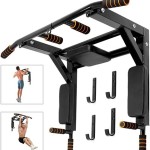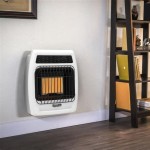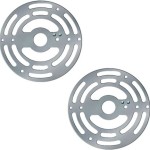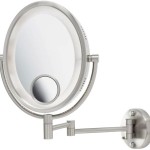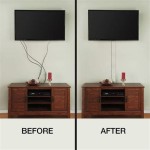Best Wall Mount Bracket for Your TV: A Comprehensive Guide
Selecting the optimal wall mount bracket for a television involves careful consideration of various factors. The sheer variety of available options can be overwhelming, ranging from basic fixed mounts to sophisticated full-motion models. Choosing the appropriate bracket is crucial not only for securely mounting the television but also for optimizing viewing angles and ensuring the long-term safety of the equipment. This article provides a detailed exploration of the key aspects to consider when selecting a wall mount bracket, aiming to equip readers with the knowledge necessary to make an informed decision.
Understanding Wall Mount Bracket Types
The first step in selecting a wall mount bracket is understanding the different types available and their respective advantages and disadvantages. Each type caters to specific needs and viewing preferences, making it essential to choose one that aligns with the intended use of the television.
Fixed Mounts: These mounts are the simplest and most economical option. They hold the television flush against the wall, offering a clean and minimalist aesthetic. Fixed mounts are ideal for situations where the viewing angle is already optimal and adjustments are not required. They are also a good choice for larger televisions, as their simplicity often translates to greater weight capacity. However, fixed mounts offer no adjustability, which can be a limitation in rooms with multiple viewing positions or where glare from windows is a concern. Installation is generally straightforward, but access to the back of the television for cable management can be limited once the television is mounted.
Tilting Mounts: Tilting mounts allow the television to be tilted vertically, typically forward and downward. This feature is particularly useful for reducing glare from overhead lighting or windows and for improving the viewing angle when the television is mounted higher than eye level. The tilting range is usually limited to a few degrees, but this can make a significant difference in viewing comfort. Tilting mounts offer a good balance between simplicity and adjustability, making them a popular choice for many homes. Installation is similar to fixed mounts, but the tilting mechanism may add slightly to the overall depth of the mount.
Full-Motion Mounts: Also known as articulating mounts, full-motion mounts offer the greatest degree of flexibility. They allow the television to be extended, swiveled, and tilted in multiple directions. This versatility is ideal for situations where the viewing angle needs to be adjusted frequently, such as in open-concept living areas or for televisions that serve multiple seating areas. Full-motion mounts are also useful for accessing the back of the television for cable management and for cleaning. However, they are typically more expensive and complex to install than fixed or tilting mounts. The extended arm of a full-motion mount can also occupy more space and may not be suitable for very small rooms. Furthermore, it is critical to ensure that the full motion mount is rated to hold the weight of the TV, especially when it is fully extended.
Low-Profile Mounts: These mounts are similar to fixed mounts, but they are designed to hold the television even closer to the wall. This results in an extremely sleek and minimalist appearance, making them ideal for installations where aesthetics are a top priority. Low-profile mounts typically offer very limited adjustability and can make cable management challenging. They are best suited for situations where the viewing angle is already optimal and where a clean, unobtrusive look is desired.
Key Factors to Consider Before Purchasing
Beyond the type of mount, several other factors play a critical role in determining the suitability of a particular bracket for a given television and installation environment. These factors include the television's size and weight, the wall's construction, the VESA compatibility, and the desired viewing angle.
Television Size and Weight: The first and foremost consideration is the television's size and weight. The wall mount bracket must be rated to support the weight of the television safely. Exceeding the weight capacity of the bracket can lead to serious damage to the television, the wall, and potentially cause injury. The product specifications of the wall mount bracket should clearly state its maximum weight capacity. It is always prudent to choose a bracket with a weight capacity that exceeds the television's weight by a comfortable margin. Television size, typically measured diagonally in inches, needs to be considered as well. Some articulated mounts may not be suitable for very large screen sizes, even if they meet the weight requirements, as the arm's reach and stability may be compromised.
Wall Construction: The type of wall to which the television will be mounted is another crucial factor. Different wall types require different mounting hardware and techniques. Drywall walls require the use of wall anchors to provide sufficient support. These anchors distribute the weight of the television over a larger area of the drywall, preventing the screws from pulling out. However, drywall alone may not be sufficient to support very heavy televisions. In such cases, it is essential to mount the bracket directly to wall studs – the vertical wooden or metal beams that form the framework of the wall. Stud finders can be used to locate the studs behind the drywall. Concrete or brick walls require specialized drill bits and anchors designed specifically for masonry. It is crucial to use the correct hardware and techniques for the specific wall type to ensure a secure and safe installation. Failure to do so can result in the television falling off the wall.
VESA Compatibility: VESA (Video Electronics Standards Association) is a standard that defines the hole patterns on the back of televisions for mounting purposes. Most televisions adhere to the VESA standard, but it is essential to verify the VESA compatibility of both the television and the wall mount bracket. The VESA pattern is typically expressed in millimeters, such as 200x200mm or 400x400mm. The wall mount bracket should be compatible with the television's VESA pattern. If the television and the bracket have different VESA patterns, an adapter plate may be required. Ensuring VESA compatibility is essential for a successful and secure installation. Incorrect VESA compatibility can prevent the television from being mounted properly or can compromise the stability of the mount.
Desired Viewing Angle: The desired viewing angle is a key factor in determining the type of wall mount bracket to choose. If the viewing angle is already optimal and no adjustments are needed, a fixed mount may suffice. However, if the viewing angle needs to be adjusted to reduce glare or to accommodate multiple viewing positions, a tilting or full-motion mount may be necessary. Consider the typical seating arrangement in the room and the range of viewing angles that will be required. For example, if the television is to be viewed from the kitchen and the living room, a full-motion mount may be the best option. If the television is mounted high on the wall, a tilting mount can improve the viewing angle by tilting the screen downward. Carefully consider the desired viewing experience and choose a wall mount bracket that provides the necessary adjustability.
Installation Considerations and Best Practices
Proper installation is paramount to ensuring the safety and stability of the wall-mounted television. Even the best wall mount bracket can fail if it is not installed correctly. Careful planning and adherence to best practices are essential for a successful installation.
Reading the Instructions: The first step in the installation process is to carefully read the instructions provided with the wall mount bracket. The instructions will provide detailed guidance on the installation process, including the necessary tools and hardware. It is important to follow the instructions precisely to avoid any errors or omissions. The instructions may also provide important safety information, such as warnings about weight limits and potential hazards. Ignoring the instructions can lead to improper installation and potentially dangerous consequences.
Gathering the Necessary Tools: Before beginning the installation, gather all the necessary tools. These tools typically include a stud finder, a level, a drill, a screwdriver, a measuring tape, and a pencil. A stud finder is essential for locating the wall studs behind the drywall. A level is needed to ensure that the television is mounted straight and level. A drill is used to create pilot holes for the screws. A screwdriver is used to tighten the screws. A measuring tape is used to measure the distance between the studs and the VESA pattern on the television. A pencil is used to mark the location of the mounting holes. Having all the necessary tools on hand will make the installation process much smoother and more efficient.
Locating the Wall Studs: Using a stud finder, locate the wall studs behind the drywall. Mark the location of the studs with a pencil. It is important to verify the location of the studs by drilling a small pilot hole to confirm that the stud finder is accurate. The wall mount bracket should be mounted directly to the wall studs for maximum support. If the wall studs are not spaced properly for the VESA pattern on the television, a mounting plate may be required. The mounting plate will allow the bracket to be mounted to the studs and will provide a secure attachment point for the television.
Attaching the Bracket to the Wall: Once the wall studs have been located, attach the bracket to the wall using the appropriate screws. Ensure that the bracket is level and securely fastened to the studs. Use a level to verify that the bracket is straight. Tighten the screws firmly, but do not overtighten them. Overtightening can strip the threads of the screws or damage the wall studs. Double-check that the bracket is securely attached to the wall before proceeding to the next step.
Attaching the Television to the Bracket: Once the bracket is securely attached to the wall, attach the television to the bracket. Align the VESA pattern on the television with the mounting holes on the bracket. Use the appropriate screws to attach the television to the bracket. Tighten the screws firmly, but do not overtighten them. Ensure that the television is securely attached to the bracket before releasing it. It is recommended to have a second person assist with this step, especially for larger televisions.
Cable Management: After the television is mounted, manage the cables to create a clean and organized look. Use cable ties or cable sleeves to bundle the cables together. Route the cables behind the television or through the wall to conceal them. Concealing the cables will improve the appearance of the installation and will prevent the cables from becoming tangled or damaged. Cable management is an often-overlooked aspect of wall mounting, but it can make a significant difference in the overall appearance of the installation.

The 4 Best Tv Wall Mounts Of 2025 Reviews By Wirecutter

The 4 Best Tv Wall Mounts Of 2025 Reviews By Wirecutter

3 Best Tv Wall Mounts Of 2025

The 4 Best Tv Wall Mounts Of 2025 Reviews By Wirecutter

3 Best Tv Wall Mounts Of 2025

3 Best Tv Wall Mounts Of 2025

Best Tv Wall Mounts 2024 On For Black Friday

The 4 Best Tv Wall Mounts Of 2025 Reviews By Wirecutter

Best Tv Mounts On

Looking For The Best Tv Wall Mount One All

